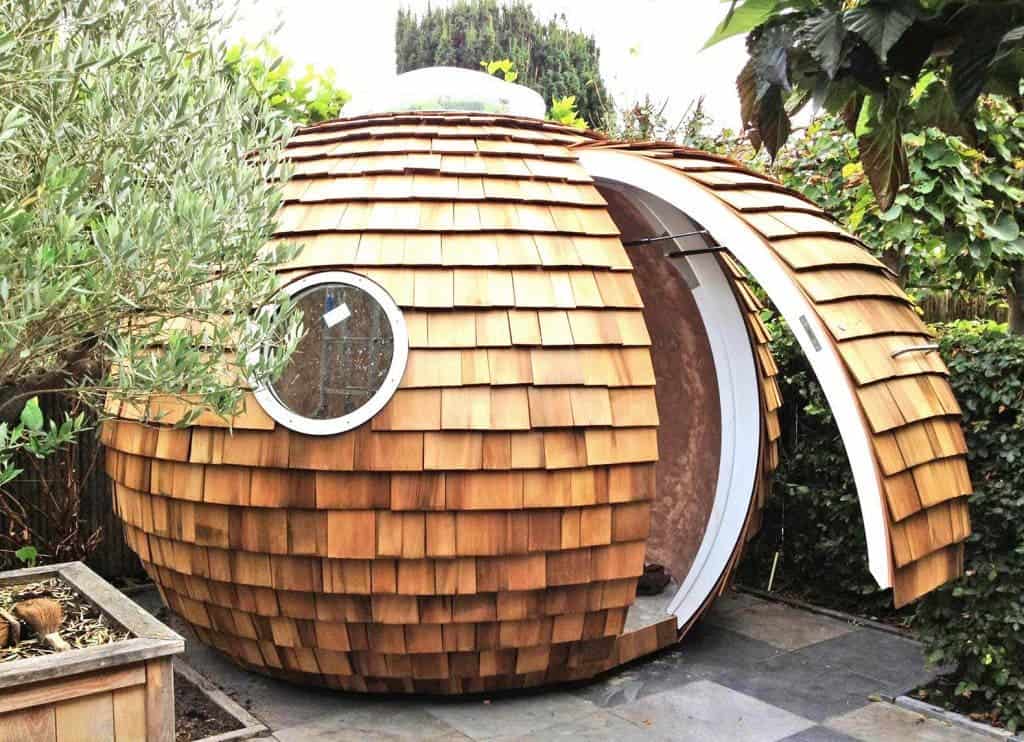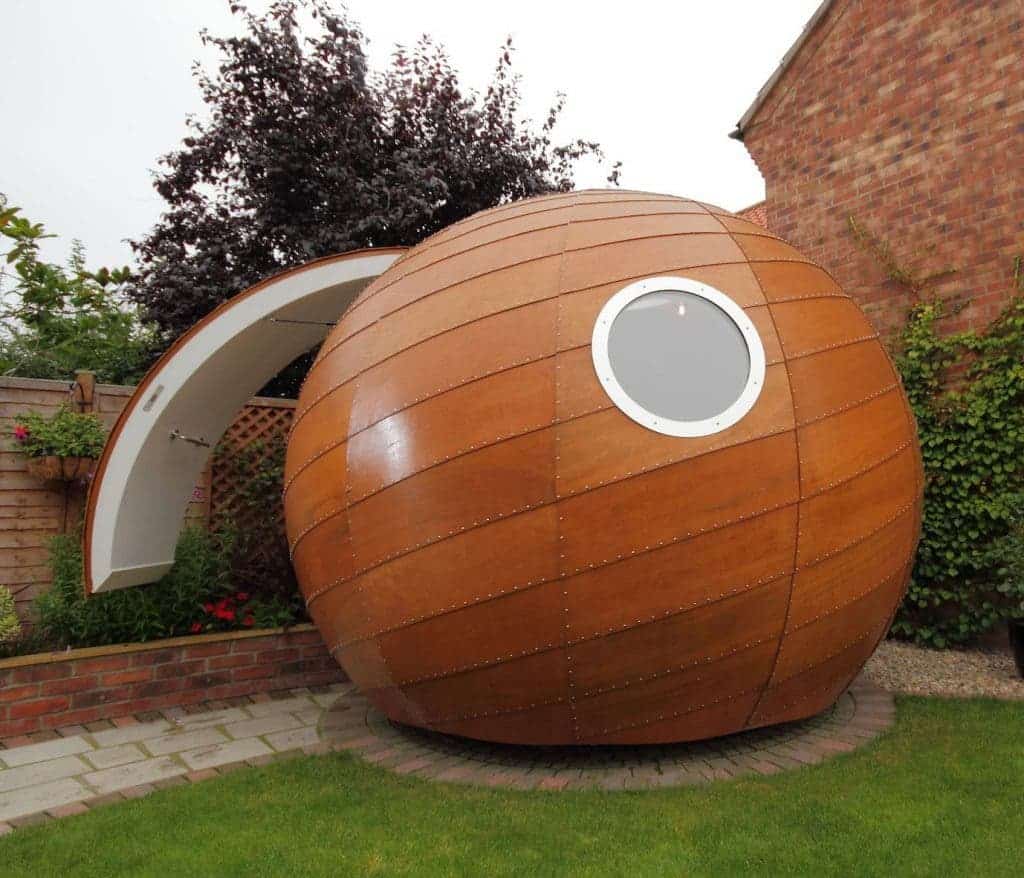If you’re looking for a home away from home, if you’re setting up the perfect workplace, or if you’re simply not a fan of rectangular spaces, Podzook has you covered. These prefabricated pods are made from eco-friendly materials and in my opinion, they’re a fantastic addition to any backyard.
“I could import parts and materials from Shanghai, set up an assembly line and sell them at WalMart. This is not my objective. The pods will not be a commodity item. They are special, made one at a time, each piece hand cut. Making them and savoring the feel of wood ripping through the saw, the way the stain is absorbed in the shingles, piecing it all together so that the parts fit just right…a work of art,” their website reads.
It’s a work of art indeed, but it doesn’t only look nice, it’s also an effective use of space. A spaceship-like gull-wing door provides access to the interior and natural light enters through a large skylight and porthole window. At 9 feet and 6 inches in diameter (almost 3 meters) and 8 feet tall (2.4 meters) it’s perfectly size to equip one or two offices, a workbench, or simply a tea table. You can even use it as a tree house or as a meditation room.
To make things even better, each pod is built from high-performance foil insulation and vapor barrier to fiberglass reinforcement that minimizes air leakage, but also features zero-emissions paints, local cedar wood and reclaimed wood.
The pricing varies between 32 and 40 thousand British Pounds, and the pods come with concrete foundation blocks, windows, glazing and everything else – all you have to do is prepare your backyard.










